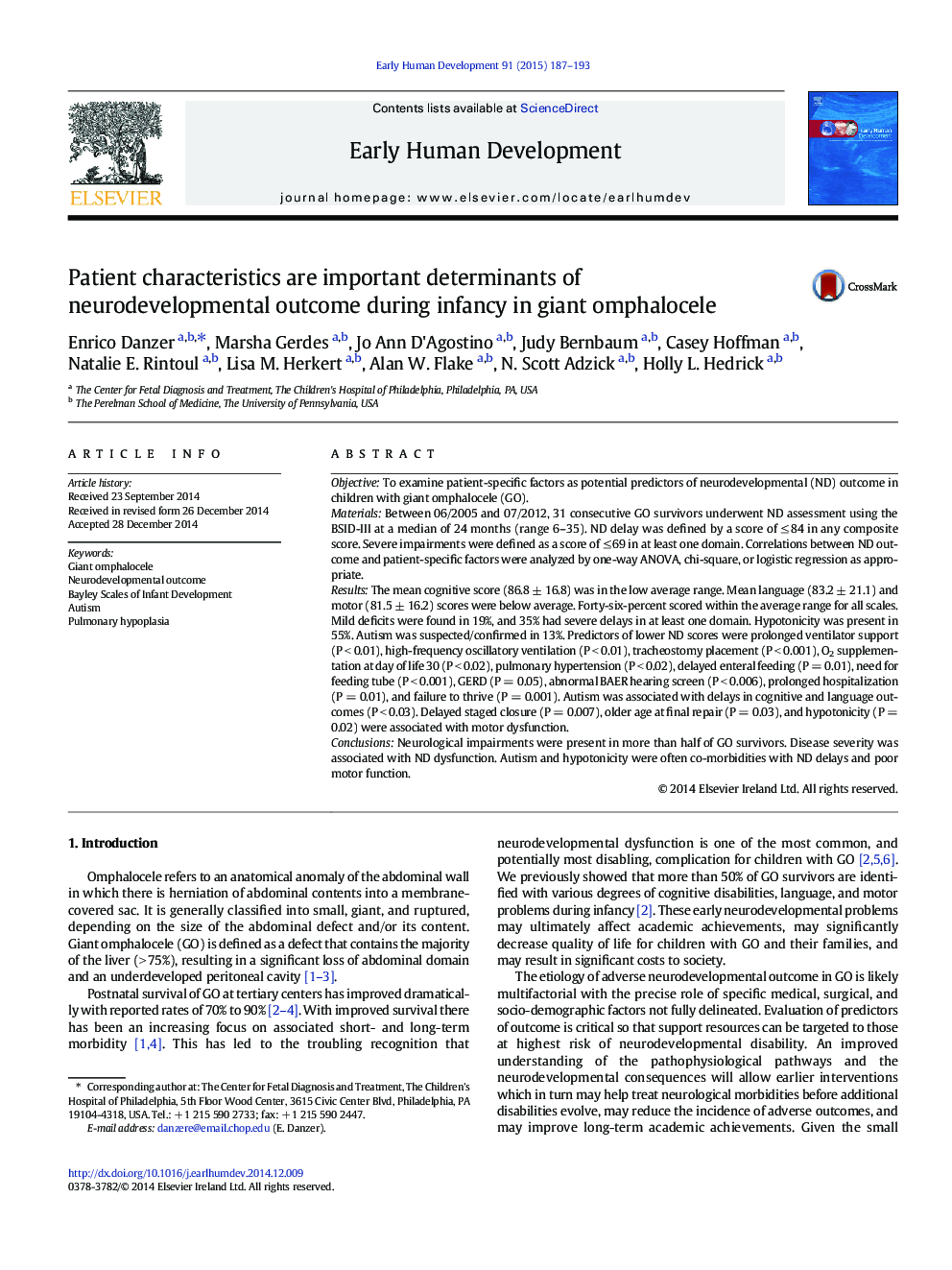| Article ID | Journal | Published Year | Pages | File Type |
|---|---|---|---|---|
| 3917000 | Early Human Development | 2015 | 7 Pages |
•Short-term neurological impairments are present in more than half of GO survivors.•Surrogate markers of pulmonary hypoplasia and hypertension, and failure to thrive predicting neurological dysfunction.•Autism and hypotonicity were often co-morbidities with neurodevelopmental delays and poor motor function.•Preschool and school age outcomes are necessary to further understand the natural history of adverse outcome in GO children.
ObjectiveTo examine patient-specific factors as potential predictors of neurodevelopmental (ND) outcome in children with giant omphalocele (GO).MaterialsBetween 06/2005 and 07/2012, 31 consecutive GO survivors underwent ND assessment using the BSID-III at a median of 24 months (range 6–35). ND delay was defined by a score of ≤ 84 in any composite score. Severe impairments were defined as a score of ≤ 69 in at least one domain. Correlations between ND outcome and patient-specific factors were analyzed by one-way ANOVA, chi-square, or logistic regression as appropriate.ResultsThe mean cognitive score (86.8 ± 16.8) was in the low average range. Mean language (83.2 ± 21.1) and motor (81.5 ± 16.2) scores were below average. Forty-six-percent scored within the average range for all scales. Mild deficits were found in 19%, and 35% had severe delays in at least one domain. Hypotonicity was present in 55%. Autism was suspected/confirmed in 13%. Predictors of lower ND scores were prolonged ventilator support (P < 0.01), high-frequency oscillatory ventilation (P < 0.01), tracheostomy placement (P < 0.001), O2 supplementation at day of life 30 (P < 0.02), pulmonary hypertension (P < 0.02), delayed enteral feeding (P = 0.01), need for feeding tube (P < 0.001), GERD (P = 0.05), abnormal BAER hearing screen (P < 0.006), prolonged hospitalization (P = 0.01), and failure to thrive (P = 0.001). Autism was associated with delays in cognitive and language outcomes (P < 0.03). Delayed staged closure (P = 0.007), older age at final repair (P = 0.03), and hypotonicity (P = 0.02) were associated with motor dysfunction.ConclusionsNeurological impairments were present in more than half of GO survivors. Disease severity was associated with ND dysfunction. Autism and hypotonicity were often co-morbidities with ND delays and poor motor function.
